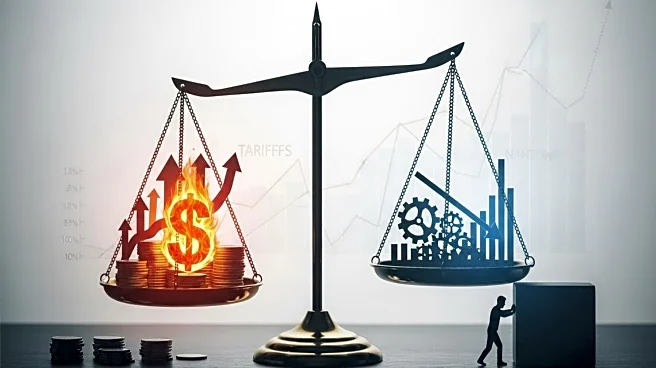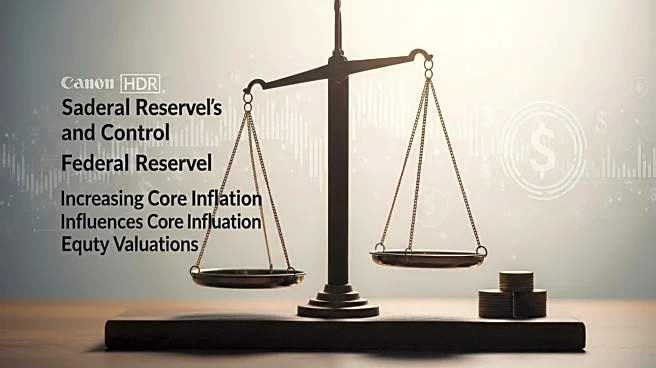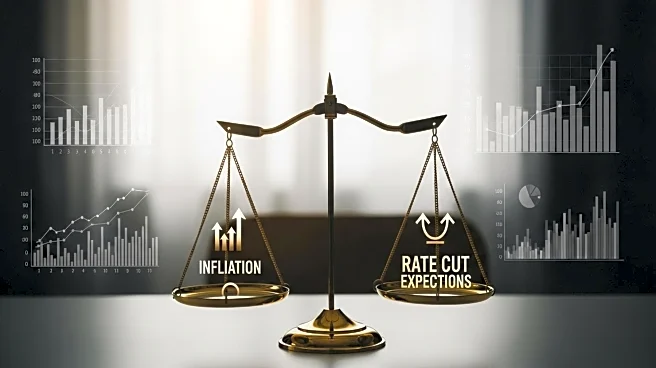What is the story about?
What's Happening?
The Federal Reserve is currently navigating a complex economic landscape characterized by persistent core inflation and a fragile labor market. Despite a moderation in headline inflation, core inflation remains above the Fed's 2% target, driven by factors such as rising shelter costs and tariff-related price hikes. The July 2025 Consumer Price Index (CPI) data indicated a 0.3% monthly increase in core CPI, with a 3.1% annualized rate. The Fed's 'wait-and-see' approach, as reflected in its July 2025 FOMC minutes, highlights the need for more data before making policy adjustments. The labor market shows mixed signals, with a 4.2% unemployment rate and slowing payroll growth, suggesting a cooling but stable market. The Fed's reliance on the personal consumption expenditures (PCE) index, currently at 2.9% year-over-year, adds complexity to its decision-making process.
Why It's Important?
The Federal Reserve's cautious approach to inflation and interest rates has significant implications for investors and the broader economy. As inflation remains a concern, investors are adjusting their strategies to hedge against potential risks. BlackRock advises diversifying into commodities and international equities, while J.P. Morgan anticipates rate cuts that could favor equity income strategies. The Fed's policy decisions will influence market stability and economic growth, affecting sectors like defense equities and gold. The ongoing debate within the Fed about easing policy underscores the challenge of balancing inflation control with economic stability, impacting investment strategies and economic forecasts.
What's Next?
The Federal Reserve's future actions will depend on disentangling transitory tariff effects from persistent inflationary pressures. Governor Christopher Waller suggests easing policy due to labor market vulnerabilities, while others within the FOMC caution against premature rate cuts. Investors should prepare for continued policy uncertainty, emphasizing liquidity and inflation-linked assets. The Fed's ability to calibrate policy effectively will be tested in the coming months, as it seeks to maintain price stability without triggering a recession.
Beyond the Headlines
The Fed's policy decisions have deeper implications for economic indicators and market dynamics. The reliance on high-frequency data from the Cleveland Fed's nowcasting model highlights the shift towards real-time metrics in economic forecasting. The divergence between goods and services inflation complicates the Fed's task, as services inflation is less responsive to rate hikes. This scenario presents challenges for traditional economic models and requires innovative approaches to policy-making.
AI Generated Content
Do you find this article useful?














